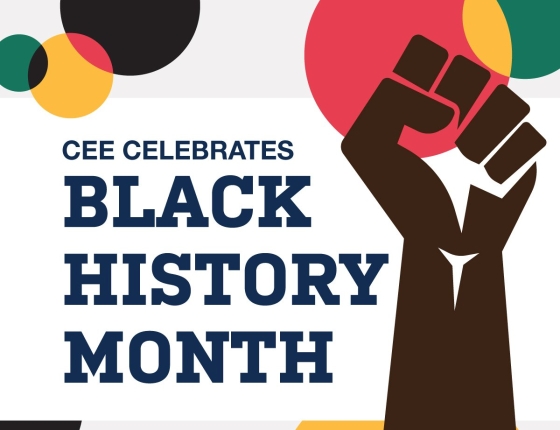Since 1976, every U.S. president has designated the month of February as Black History Month, an annual celebration of achievements by African Americans and a time to recognize the central of Black people in U.S. history. As part of its mission to drive company-wide learning and reinforce accountability, CEE’s Diversity, Equity, and Inclusion (DEI) Council uses awareness months like Black History Month as opportunities for learning, discussion, and reflection.
This year’s Black History Month theme is Black Resistance — a call for everyone to study the history of Black Americans’ resistance to historic and ongoing oppression, as well as generations of progress “to establish safe spaces, where Black life can be sustained, fortified, and respected.” (ASALH, 2023)
CEE’s DEI Council has compiled some resources for learning more:
· Celebrate Minnesota’s Black History Makers – This series of short clips from Twin Cities PBS educates viewers about some intriguing Black Minnesotans who made history for their unique contributions to our state. Discussion questions are provided to spark further conversation and engagement.
· Association for the Study of African American Life and History: Black Resistance – Learn more about this year’s Black History Month theme. This guide provides a comprehensive introduction to Black Americans’ history resistance against oppression in all forms, especially the racial terrorism of lynching, racial pogroms, and police killings.
· The Jim Crow of the North – Why does Minnesota have some of the worst racial disparities in the nation? One answer is the spread of racist, restrictive real estate covenants in the early 20th century. This video charts the progression of racist housing policies and practices in Minnesota through the late 1960s.
· Martin Luther King’s ’63 and ’67 Minnesota visits are a study in contrasts – This MinnPost explores how the nation’s political and social landscape changes dramatically in the four years that separated Martin Luther King’s ’63 and ’67 visits to Minnesota.
· The Story of the Rondo Neighborhood – In the 1950s, about 85% of Saint Paul’s Black population lived in the Rondo neighborhood. Most of the original Rondo Avenue and the historic neighborhood were destroyed to build Interstate 94.
The DEI Council invites both CEE staff and the communities we work with to keep learning with us. Visit our Equity and Inclusion page to read more about how we are working to change the histories of marginalization and oppression impacting our home region and the energy efficiency field.
